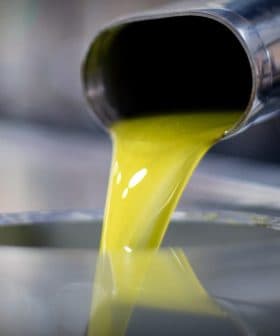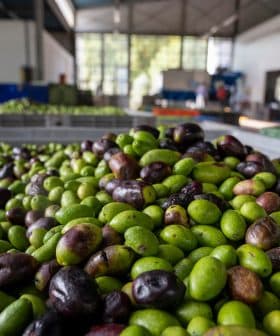Yeast Study Finds Solution for Olive Mill Wastewater Treatment
A study in the journal Fermentation explores the use of Yarrowia lipolytica yeast to convert olive mill wastewater into valuable compounds for various industries, addressing the issue of wastewater pollution in the olive oil industry. While the yeast shows promise, challenges such as wastewater variability, compound interference, and economic factors must be addressed for widespread implementation in treating and utilizing olive mill wastewater effectively.
A new study, published in the journal Fermentation, has examined the use of the non-conventional yeast Yarrowia lipolytica to convert olive mill wastewater into high-value compounds with applications across a wide range of industries, including biofuel, food and pharmaceuticals.
The olive oil industry generates a substantial amount of wastewater, with estimates exceeding 30 billion liters per annum worldwide.
This water is a potent and problematic pollutant, characterized by high salinity and electrical conductivity, as well as high acidity and large quantities of organic and phenolic compounds.
See Also:Study Finds Potential for Olive Mill Wastewater in BiopesticidesThese characteristics make it harmful to soil microbes, aquatic life and long-term soil health. Phenolic compounds, in particular, contribute to the wastewater’s resistance to treatment, inhibiting microbial growth.
The vast majority of olive mill wastewater is currently disposed of in one of two ways. The first is via evaporation ponds, which lead to increased air pollution due to the release of harmful and acidic gases such as methane and hydrogen sulfide, and both soil and groundwater contamination due to leaching.
The second is via its use as an organic fertilizer on agricultural land. However, there is also growing concern about this practice.
Studies have shown that prolonged and repeated land application leads to the accumulation of phenolic compounds, salts and heavy metals in soils, reduced microbial diversity and activity, widespread impacts on wildlife and the eventual sterilization and desertification of land.
Several microbial organisms have been proposed as candidates for treating olive mill wastewater. Of these, the researchers believe that Yarrowia lipolytica stands out, not only due to its ability to thrive in nutrient-poor, acidic, phenolic-rich environments, but also because of the range of valuable substances it can produce.
Among other compounds, the yeast can synthesize lipases, important in sectors such as food processing, pharmaceuticals and biofuels; citric acid, used in industries as diverse as detergent manufacturing, electroplating and leather tanning; and polyols, including mannitol, erythritol and arabitol, which have applications in products such as low-calorie sweeteners and humectants.
The yeast also synthesizes single-cell oils, rich in oleic and linoleic acids, which are suitable for use as biodiesel or as nutritional supplements.
By modulating culture conditions such as oxygen levels, pH and carbon source, production can be tailored to different end uses. The resulting lipid profiles can even mimic cocoa butter or serve as precursors for ricinoleic acid derivatives with diverse applications.
See Also:Producers in Greece Generate Electricity with Olive Mill WastewaterThe research team emphasizes that these capabilities mean the process of wastewater treatment can contribute to the move towards a circular economy within the olive oil industry, a move supported not only by the scientific community but also by national and supranational government bodies, such as the European Union.
Despite its promise, the widespread deployment of Y. lipolytica for olive mill wastewater treatment and valorization faces several obstacles.
Wastewater composition is highly variable, influenced by factors such as olive variety, extraction method and seasonal conditions, among others. This variability complicates process standardization and performance.
In addition, compounds, particularly phenolics and salts, can reduce microbial activity or product yields. While some strains tolerate these conditions, others require dilution, pre-treatment or supplementation to maintain efficiency.
Economic factors also pose barriers. Although Y. lipolytica can grow in non-sterile, low-cost media, large-scale operations require systems with high-energy stages, downstream processing and market access for bio-based products.
However, the researchers believe that with sufficient research focused on key areas, the yeast represents an economically viable way to unlock the potential of olive mill wastewater whilst safely removing it from the environment.
They point to proof-of-concept studies and a considerable body of existing literature to support this view.
- Environmental Science and Pollution Research
- Journal of Analytical Sciences and Applied Biotechnology









